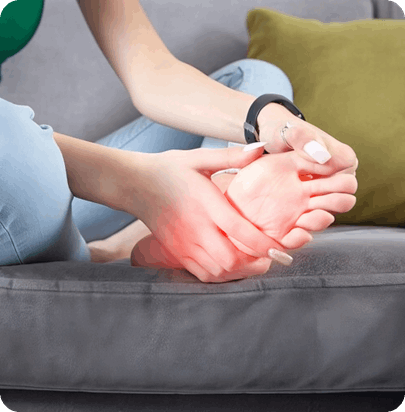Achilles tendonitis can be a frustrating and painful condition. This can particularly be the case for those who depend on physical activity for work, exercise, or daily routines. The discomfort, often felt as a sharp or persistent heel pain, is linked to inflammation of the Achilles tendon. This tendon connects the calf muscles to the heel bone and plays a central role in movement, stability, and balance. If you’re experiencing symptoms of Achilles tendonitis, understanding the condition and exploring treatment options is a practical first step.
What Is Achilles Tendonitis?
Achilles tendonitis occurs when the Achilles tendon becomes inflamed, typically due to repetitive activities or excessive strain. This condition usually results from overuse and affects individuals involved in activities requiring frequent or intense movement, such as running, jumping, or rapid changes in direction. Symptoms often include tenderness, swelling, and stiffness near the back of the ankle or heel. Mild discomfort may be noticeable during or after exercise, while more severe cases may result in constant heel pain and difficulty during simple activities like walking or climbing stairs.
When Should You Seek a Diagnosis?
Pain and stiffness that worsen over time may indicate the need for professional evaluation. Persistent symptoms or those that interfere with daily activities warrant consultation with a healthcare provider or specialist in foot and ankle conditions. When seeking a diagnosis, a healthcare professional may employ the following methods:
- Medical History Assessment: The provider will ask questions about the onset, severity, and nature of your symptoms.
- Physical Examination: This typically includes examining along the Achilles tendon to locate signs of swelling.
- Imaging Tests: X-rays may help rule out other conditions like bone spurs. MRI scans might be recommended to evaluate the extent of inflammation or detect tears within the tendon.
Accurate diagnosis aids healthcare providers in recommending effective strategies for managing and reducing symptoms.
How Is This Heel Pain Treated?
Treatment for Achilles tendonitis focuses on reducing pain, promoting healing, and restoring normal function. Early intervention can help prevent the condition from worsening or becoming chronic. Below are common approaches:
- Rest and Activity Modification: Resting the affected foot allows the tendon to recover from overuse and strain. Avoid activities that require repetitive movement or high-impact actions and opt for low-impact alternatives.
- Ice Application: Applying an ice pack to the inflamed area for up to 20 minutes, multiple times a day, can help reduce swelling and discomfort.
- Supportive Footwear and Orthotics: Proper footwear with cushioning and arch support can reduce strain on the Achilles tendon.
- Over-the-Counter Pain Relievers: Nonsteroidal anti-inflammatory drugs (NSAIDs) may be suggested for temporary relief of pain and inflammation.
Consulting with a healthcare provider will help determine the most appropriate treatment plan based on the severity of the condition and individual needs.
Reach Out to a Foot Specialist About Treatment
Dealing with ongoing heel pain from Achilles tendonitis can be physically taxing, especially if it limits your ability to participate in daily or recreational activities. Seeking guidance from a foot care professional empowers you to make informed decisions about managing symptoms and achieving relief. Whether through educational resources or treatment options, a foot care expert can provide a comprehensive, supportive approach to your recovery.
- When to See a Foot and Ankle Surgeon
- Top Benefits of Visiting a Vein Clinic for Early Treatment of Vein Issues
- The Intersection of Gynecology and Endometriosis Treatment
- Regenerative Orthopedics for Post-Surgery Healing
- The Role of Pain Management in Living with Chronic Pain
